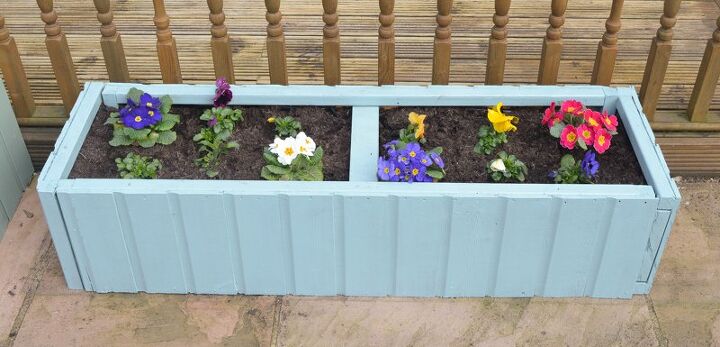Last summer we removed our semi-rotten sheds and replaced with one large shed. But naturally that leaves pieces of old shed to deal with – we hate to throw anything away, ideally we like to re-purpose into something new. Our first make from the old shed was a large outdoor table which seats ten, you an read how to do this here. With plenty of the old sheds left and with spring in the doorstep it is time to make some deep upcycled planters, perfect for spring bedding plants or even the odd vegetable.
To make your own measure the space in the garden and decide on the size of your finished planter. Choose pieces of shed paneling, ensuring they are not rotten. Remove some extra sections of batten from another old section to use as a frame.
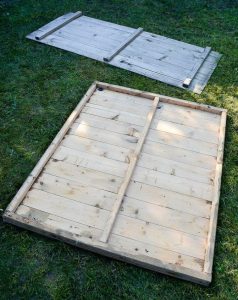
Mark out on both sides of the paneling the height of your new planter -this one is 1 foot deep.
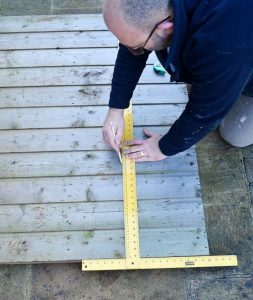
Place a piece of extra batten on the inside just below the top of the planter, and fix with nails. Effectively you are making a frame out of battening before cutting the section out.
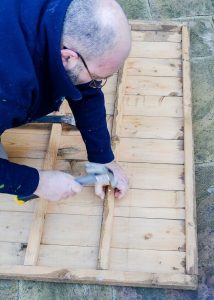
Turn over, on the right side place more nails all the way along so that the tongue and groove sections of the old shed do not come apart when you cut the section out.
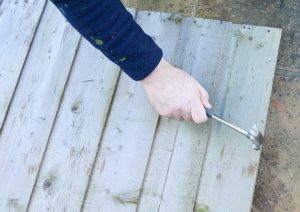
Using a Scorpion or similar saw cut out the planter side flush with the batten you have nailed on.

Next, make a second identical long side of the planter. You will need quite a bit of extra battening – removed from other sections of the shed.
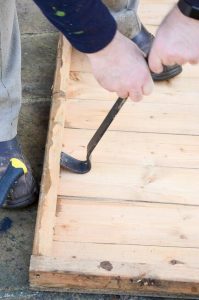
Repeat the process to make the base, then two ends for the planter. To keep it simple we used the same size section for the base, but you could change this for a narrower or wider planter.

Predrill holes then add long screws to join the planter all together. Start with the long sides to the base, then add the ends. If you are not sure which drill piece to use sign up to my newsletter for a handy drill pieces fact sheet.
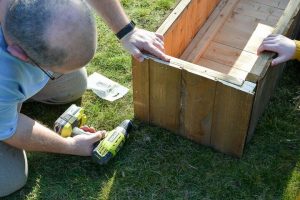
Dependant upon the length of your planter add a cross piece in the middle and ends to provide additional strength, to make sure the sides do not spread apart when you add your soil.

Paint with outdoor wood paint if desired. We gave the planter 2 coats of garden wood paint, so no undercoat is required.
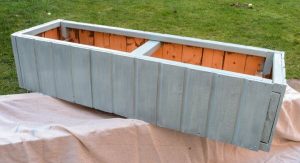
Line with a pond liner or similar plastic sheeting to preserve the life of the planter (so the wood is not constantly wet). This was trimmed to size and secured just below the rim with a staple gun . We used a thick pond liner to help make sure the sides do not spread apart when the soil is added, again because of the depth and the amount of soil involved. Fill with soil and add plants.
You could add a false bottom and make the planter half as deep if you just want to grow small plants. If you do this you could also use a much cheaper liner – like strong refuse sacks. We used pond liner and went for full depth, so we have the option in the future of growing larger shrubs or vegetables that need extra depth.


